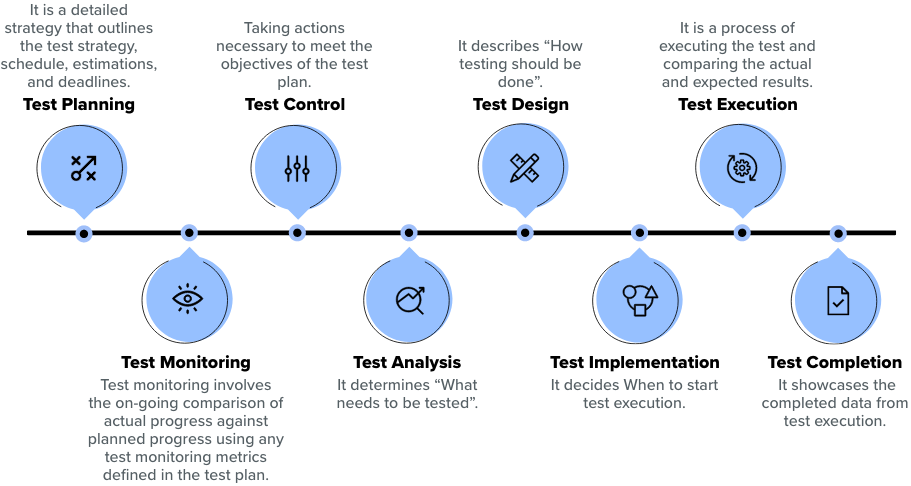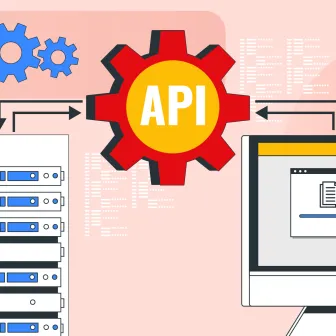A flawless product delivery requires a perfect combination of both development and testing efforts. Testing plays a vital role in delivering a product both bug-free and user-friendly. However, there are some misconceptions about testing that make people think that testing is unnecessary and it is not as important as development.
In this blog, we will try to dispel some of these common misconceptions about testing and share some facts with you.
Before that, why must these testing misconceptions be shattered in the first place?
The reason is quite simple allegedly some of these misconceptions create hostility among teams or sometimes teams devalue testing all of which cumulatively hampers the overall team’s performance and results in poor-quality software. Let’s examine some of these misconceptions and understand what happens behind the scenes.
6 Misperceptions about Testing vs Facts
These are the top 6 myths that exist in software testing, below we are going to disprove most of them.
Myth: It only consists of running tests, i.e., executing the software and checking the results.
Fact: Software testing is a process that includes many different activities; test execution including preventing results is only one of these activities.

Test Process: There are multiple steps and activities involved in testing including
- Test planning
- Analyzing, designing, and implementing tests
- Reporting test progress and results
- Evaluating the quality of a test object
Dynamic Testing: Some testing does involve the execution of the component or system being tested; such testing is called dynamic testing.
Static Testing: Other testing does not involve the execution of the component or system being tested; such testing is called static testing. This includes reviewing work products such as requirements, user stories, and source code.
Myth: It focuses entirely on the verification of requirements, user stories, or other specifications.
Fact: Testing involves both validation and verification Processes
Verification is about inspecting if the system meets specified requirements. Validation, on the other hand, is a process of examining whether the system will fulfill the demands of users and other stakeholders in its operational environments.
|
Verification |
Validation |
|---|---|
|
It includes checking documents, design codes, and programs. |
It includes testing and validation of the actual product. |
|
It is static testing. |
It is dynamic testing. |
|
Doesn't possess code execution. |
Includes code execution. |
|
Consists of reviews, walkthroughs, inspections, and desk-checking. |
Includes non-functional testing, black box testing, and white box testing. |
|
Determines whether the software meets the requirement or not. |
Determines if the software satisfies the needs and requirements of the client. |
|
Promotes bug detection at the initial development stage. |
Can detect bugs that the verification failed to detect. |
|
The goal is to determine whether or not the product meets the specified requirements and objectives. |
The goal is to ensure that the product, process, and system meet the expected requirements. |
|
The quality assurance team does the verification. |
Validation is executed on software code with the help of a testing team. |
|
It comes before validation. |
It comes after verification. |
|
Consists of checking documents/files and is performed by humans. |
Consists of the execution of a program and is performed by the computer. |
Myth: Quality Assurance is nothing but testing.
Fact: While the terms quality assurance and testing are frequently used interchangeably, they are not synonymous. Quality management, a deeper concept, integrates them.
Quality management: It encompasses all actions that guide and govern an organization's quality. Quality management encloses both quality control and quality assurance.
Quality assurance: It is primarily focused on adhering to the right protocols in order to ensure that the necessary standard of quality is achieved.
When procedures are carried out correctly, the work products produced by those processes are often of higher quality, which adds to defect prevention.
Furthermore, the use of root cause analysis to uncover and eliminate the causes of defects, as well as the right implementation of the findings of retrospective meetings to improve procedures, is critical for successful quality assurance.
Quality control: It entails a variety of activities, including test activities, that help to reach suitable levels of quality.
Test activities are part of the larger process of software development and maintenance.
Note: While quality assurance is concerned with the effective execution of the entire process, it promotes proper testing.
Myth: Testing is easy, anyone can do it.
Fact: Testing requires a special mindset and skills and is not just a random clicking on apps and websites that make you a professional tester.
A tester’s mindset should include:
- Curiosity
- Professional Pessimism
- A Critical Eye
- Detail Oriented
- Extraordinary Thought process
- Obsessed With Product Quality
- Disciplined
- Motivation to thrive in good and positive communication and relationships.
Myth: Manual Testing is out of date, and will be replaced by automation
Fact: Manual testing is base of the quality assurance process. Automation testing would never replace it.
Manual Testing helps make a stable product, and only after that, automated testing gets into the picture. 100% automation cannot be achieved without manual testing first. User experience is an essential aspect of quality assurance and in many situations, just a human can properly perform particular tasks and provide appropriate feedback or assessment.
Myth: Testing should be done post-development stage or the last step in the software life cycle.
Fact: Involving QA Team at the final stage is a major reason for a product's bad quality. Testers must start to work as early as possible to have enough knowledge of the product being developed. The test process starts with static analysis where the tester study documentation, analyze risks, and design test cases before actual execution
Conclusion
Testing is a crucial part of any product life cycle and prime product development is impossible without proper testing. In general, testing is the method of checking how well something works, and having misconceptions about testing itself can lead to bad-quality products. Misconceptions, in general, are barriers to new learning, and software testing is all about learning about the faults in the system. Debunking testing misconceptions can lead to better product learning and innovation. With emerging technological trends you need a partner that makes sure your website is innovative and profitable. At OpenSenseLabs, we help enterprises provide a better digital experience. Contact us at [email protected].
Subscribe
Related Blogs
AI Fairness: A Deep Dive Into Microsoft's Fairlearn Toolkit

Artificial intelligence (AI) has changed the game across industries, especially in financial services. From automating…
API Documentation Tool: 10 Best Tools For 2025

A Google search for ‘Best API Documentation Tool’ will show many results. The growing number of API documentation tools…
With Ant Design, Create React Components Like a Pro

Most enterprise-grade solutions depend on the React stack to create a robust platform for improved delivery and performance…




